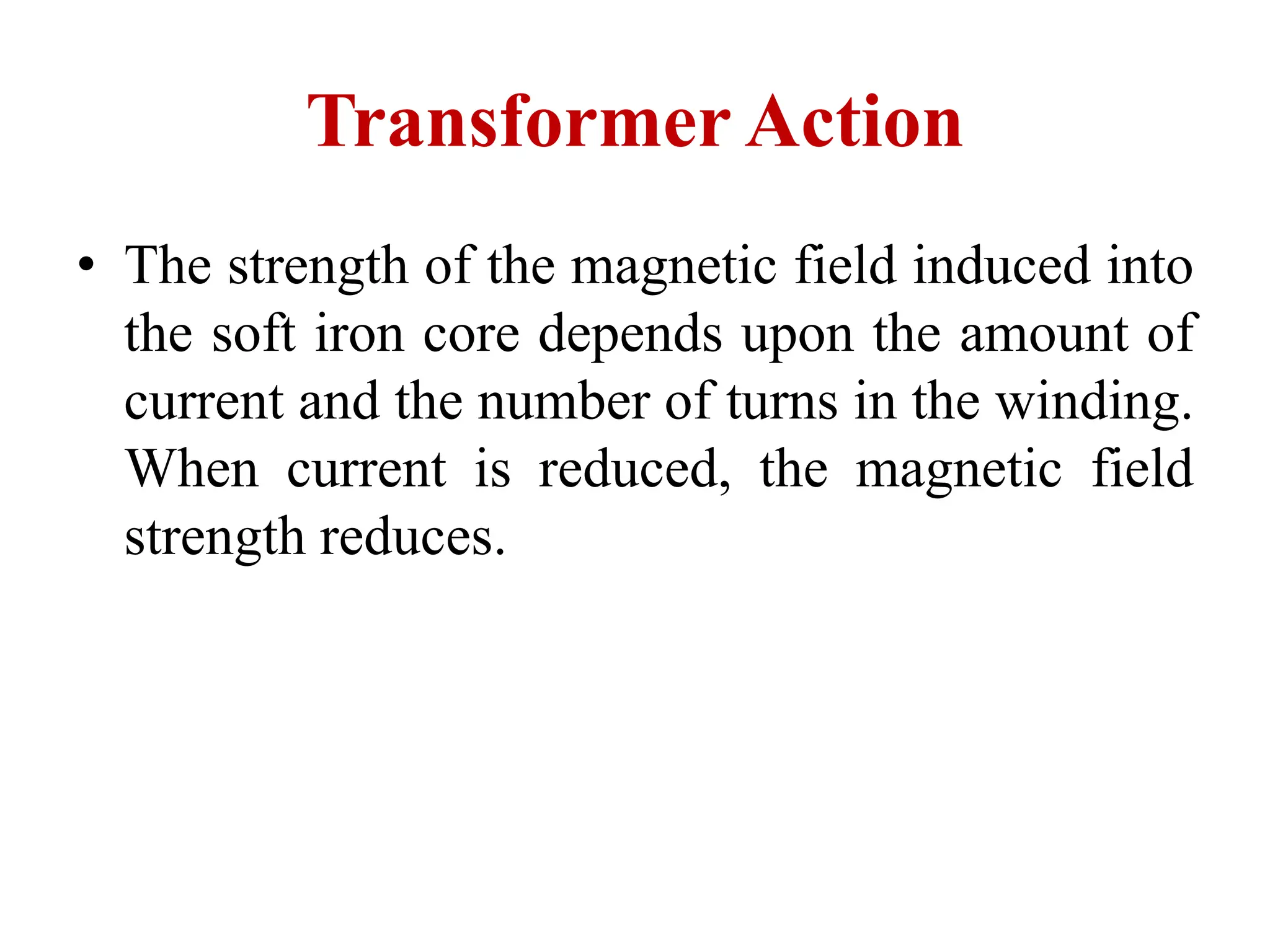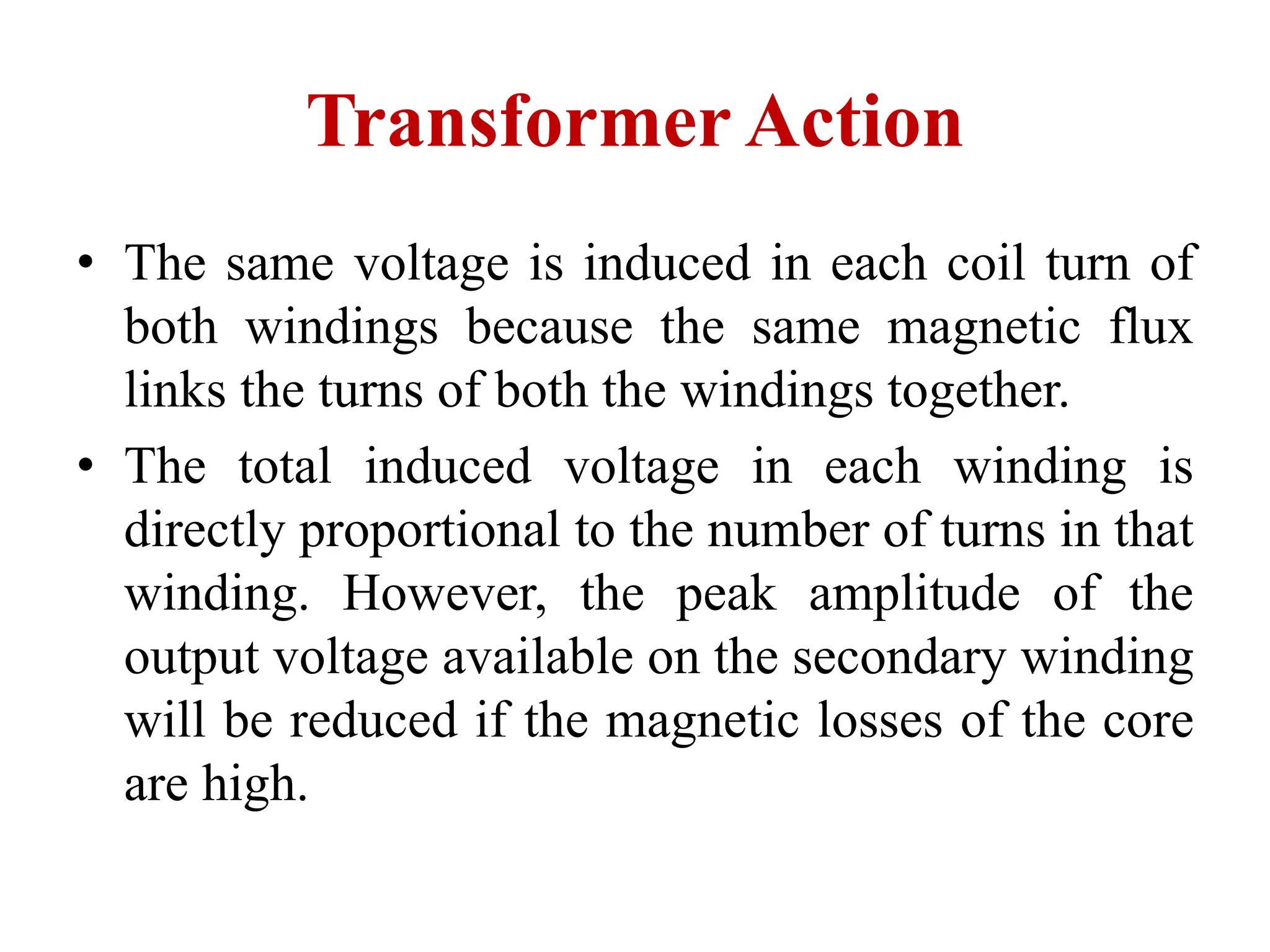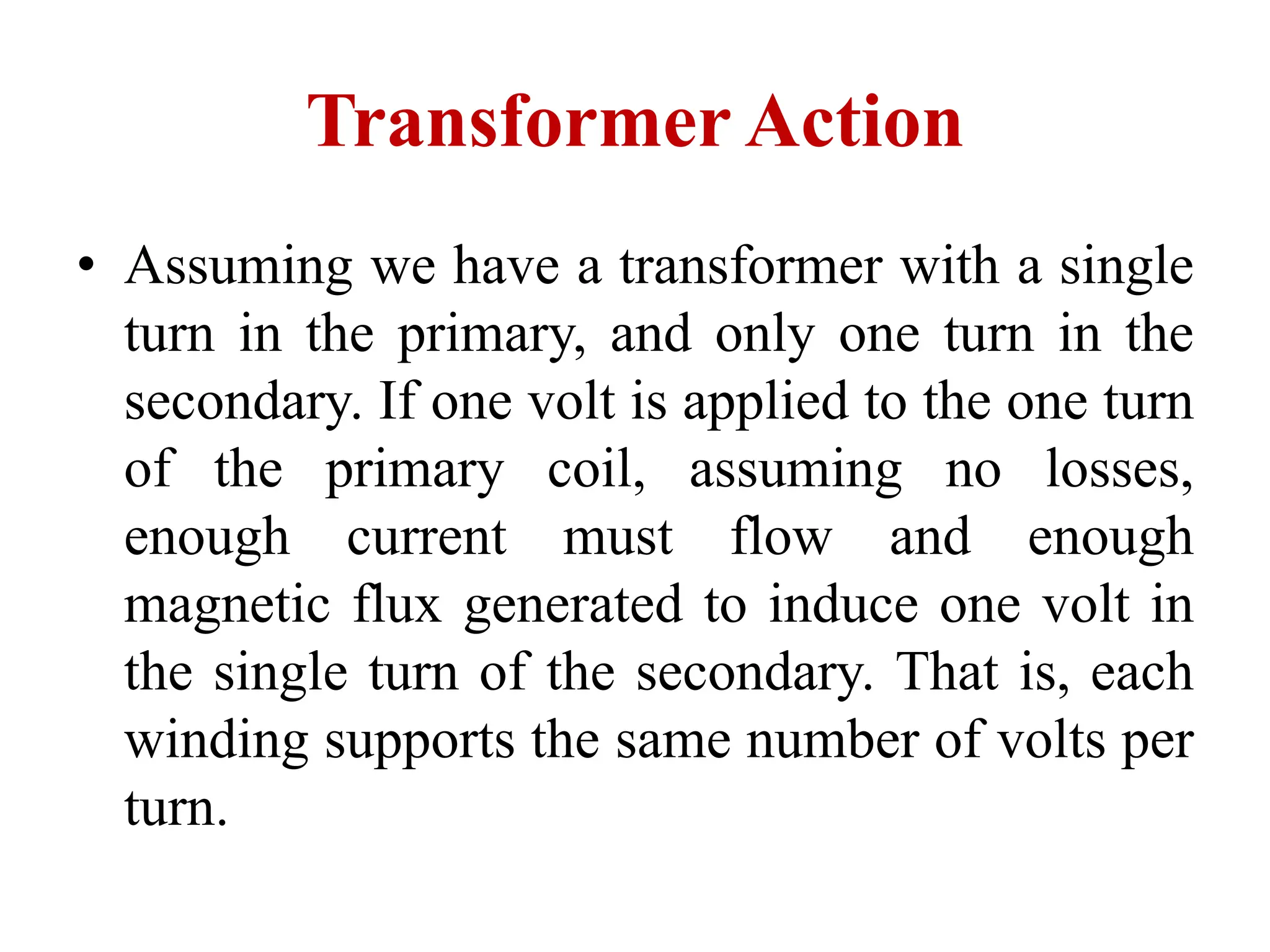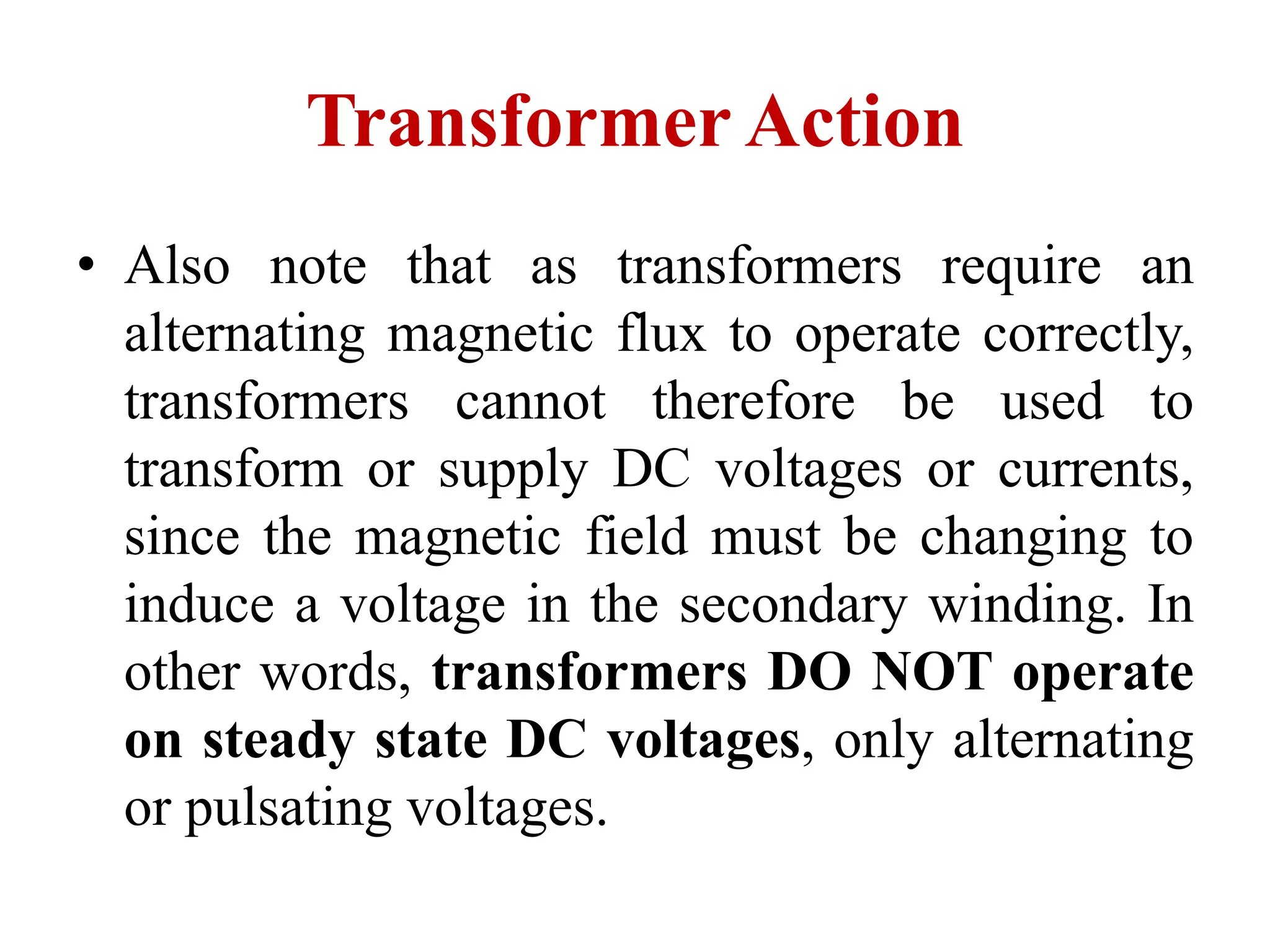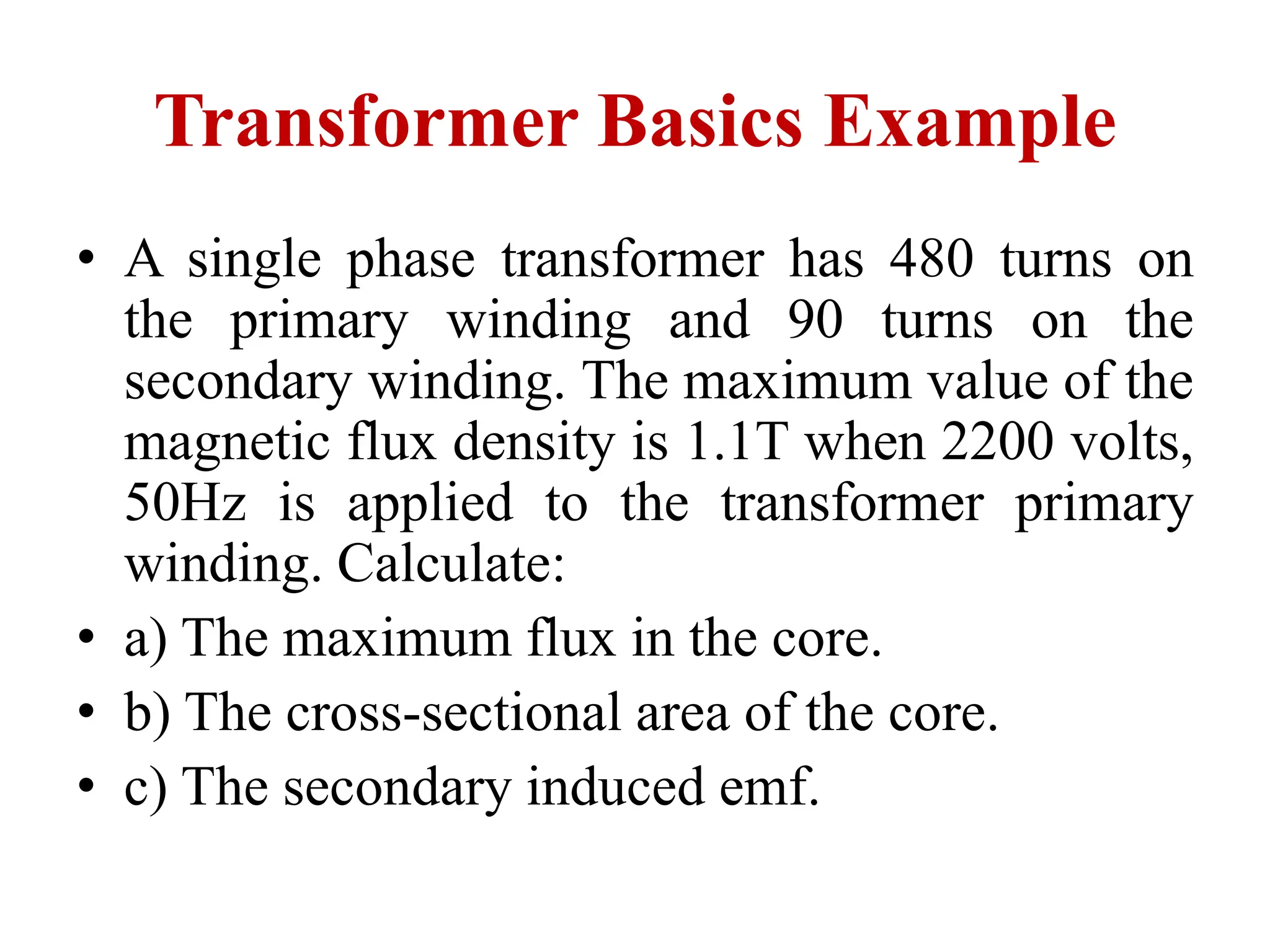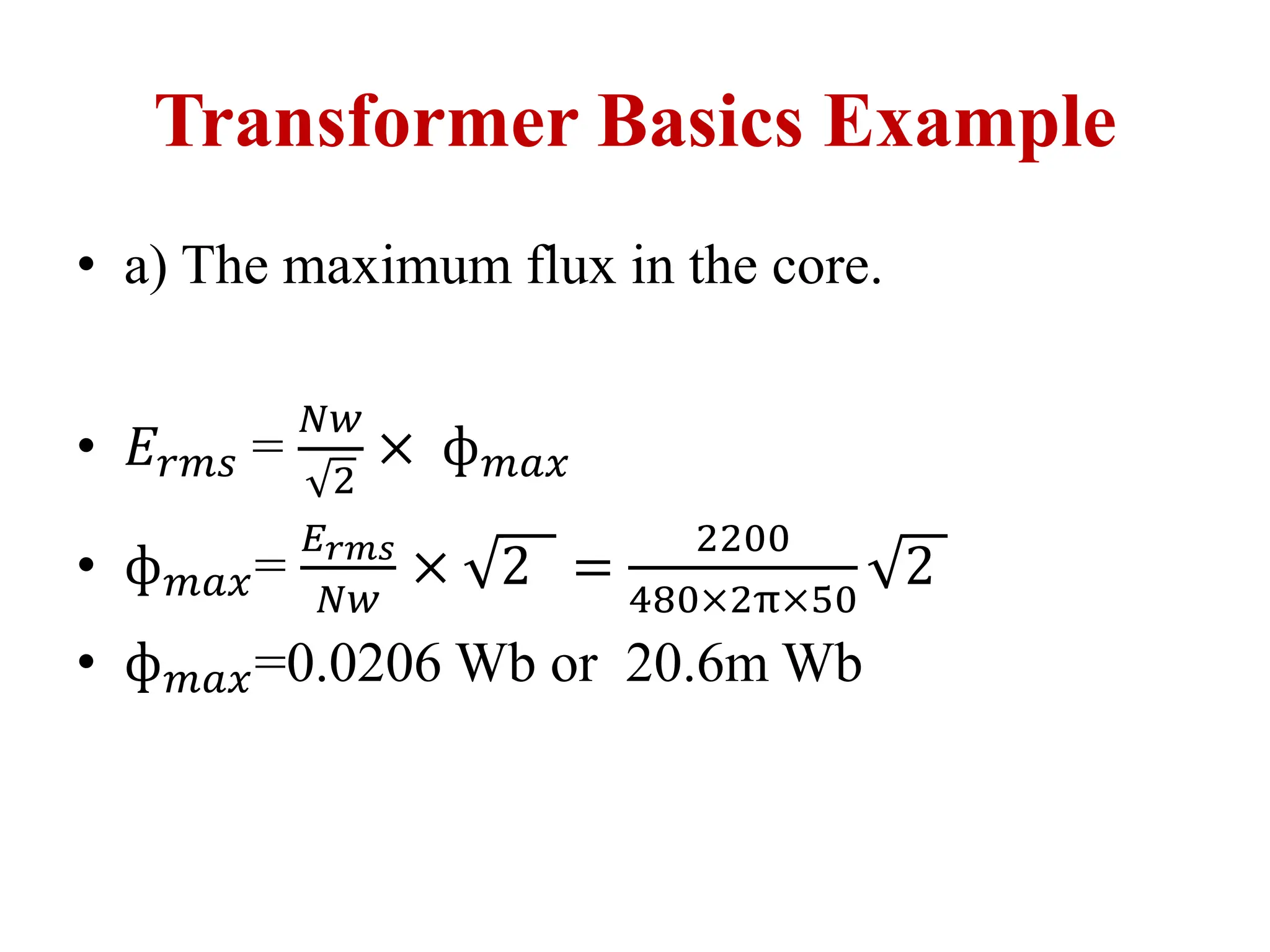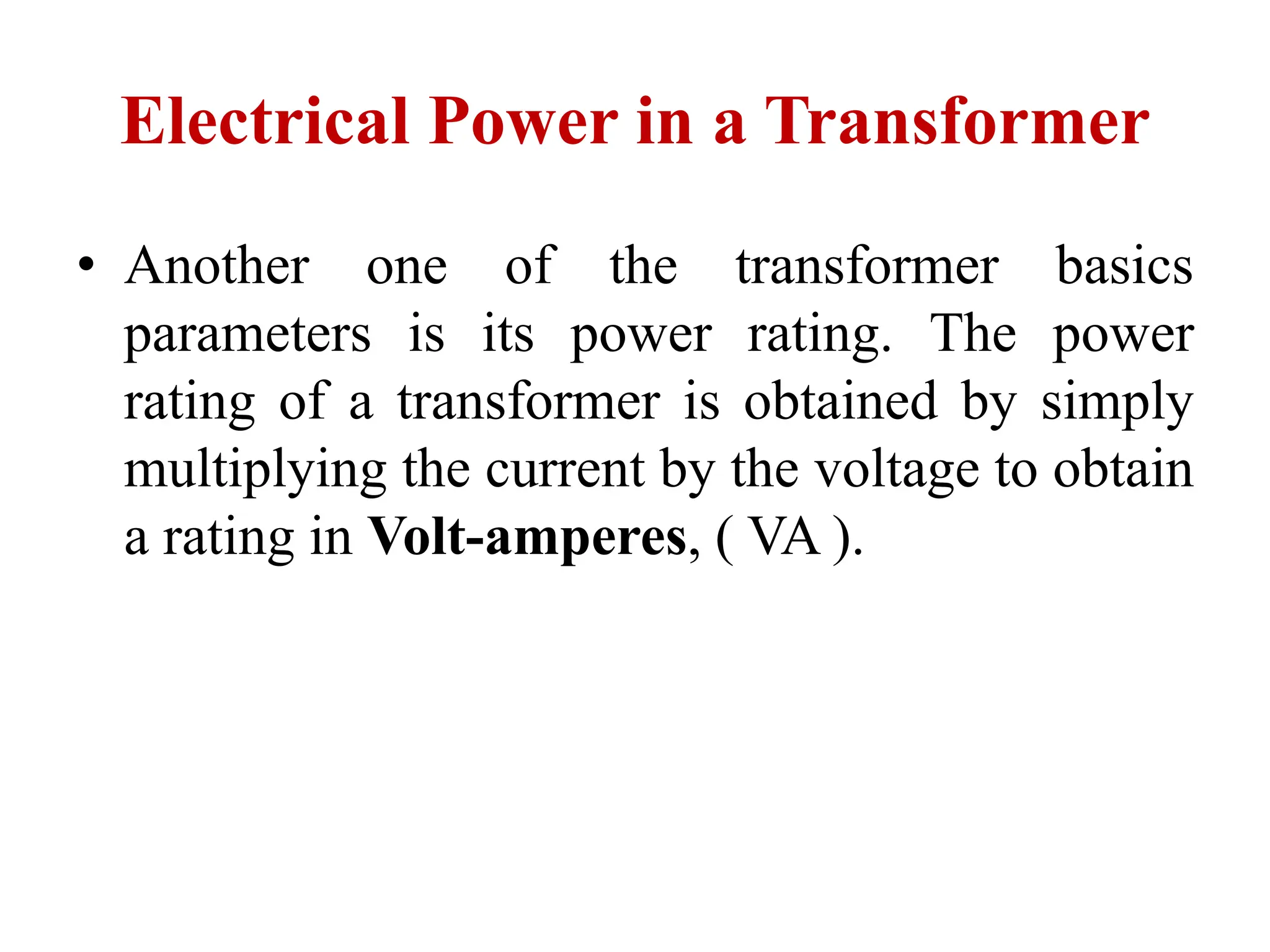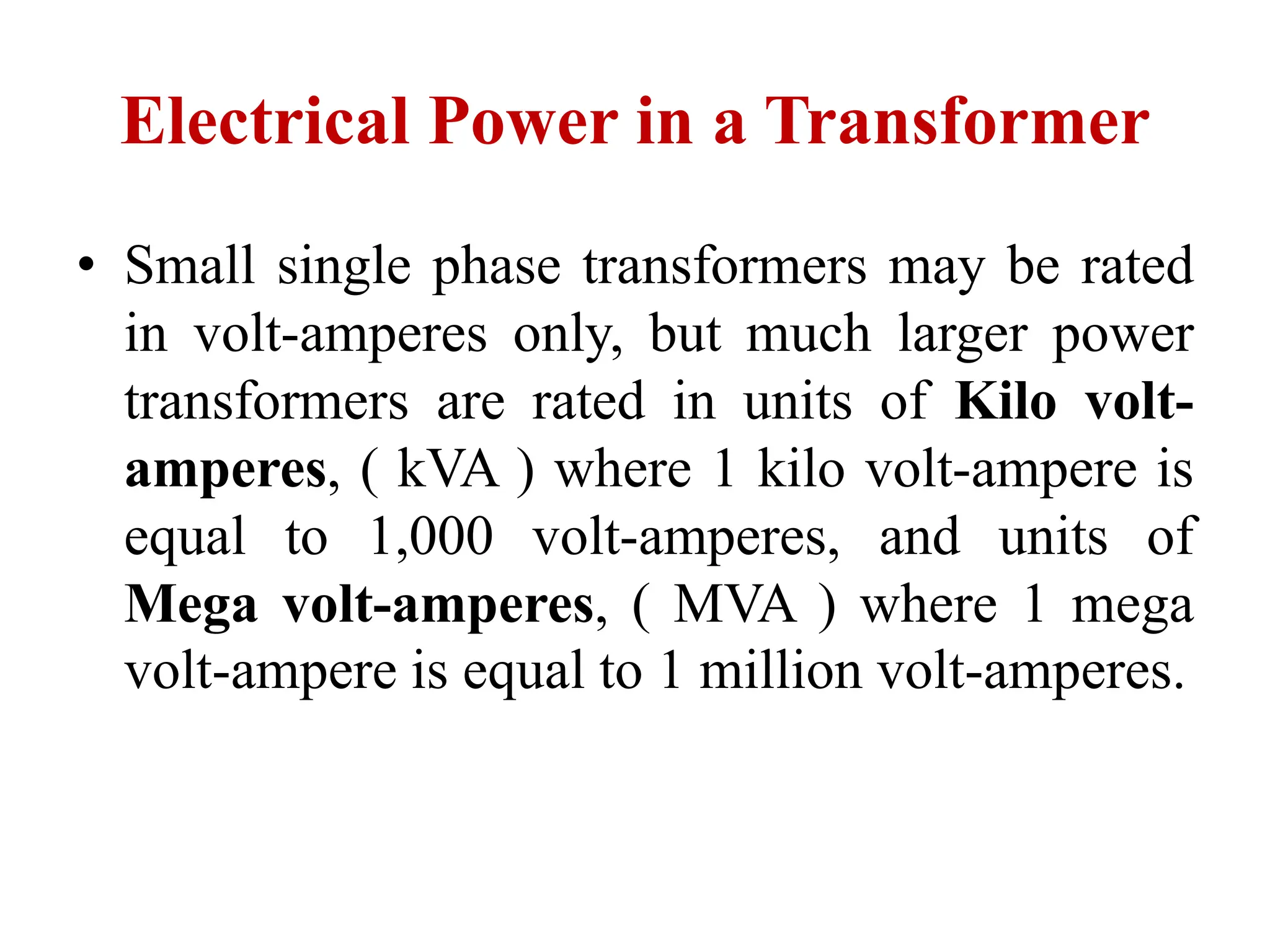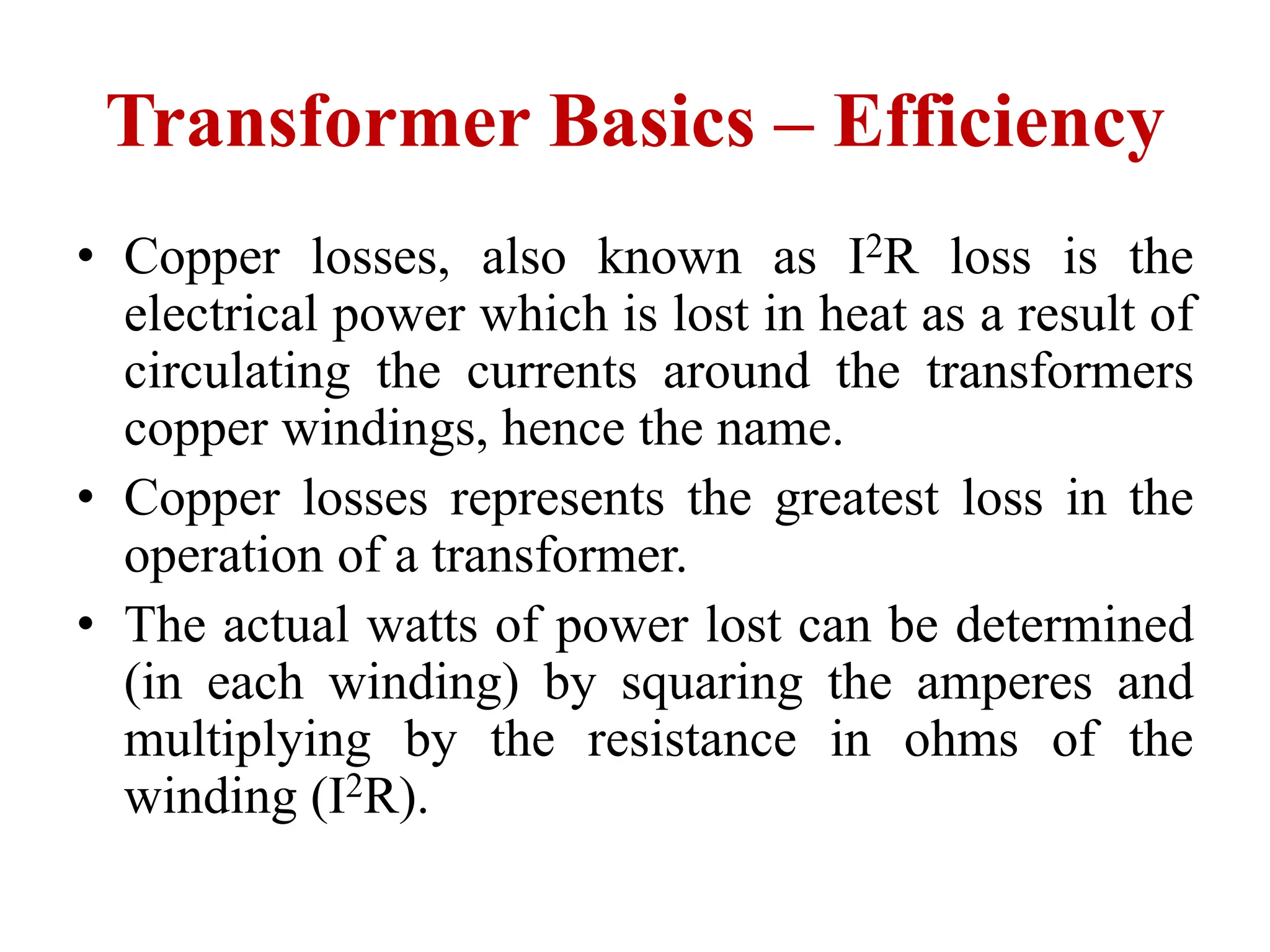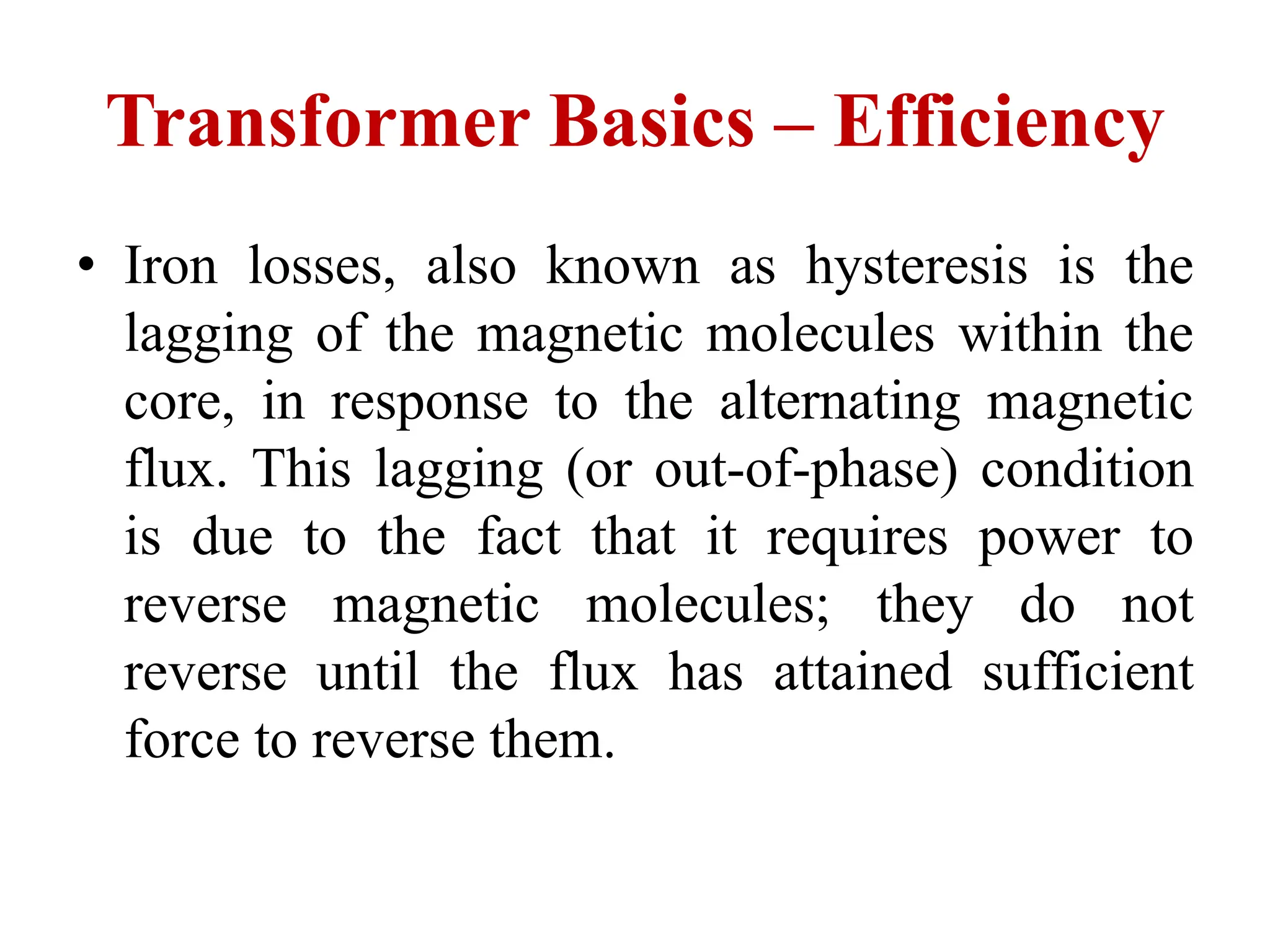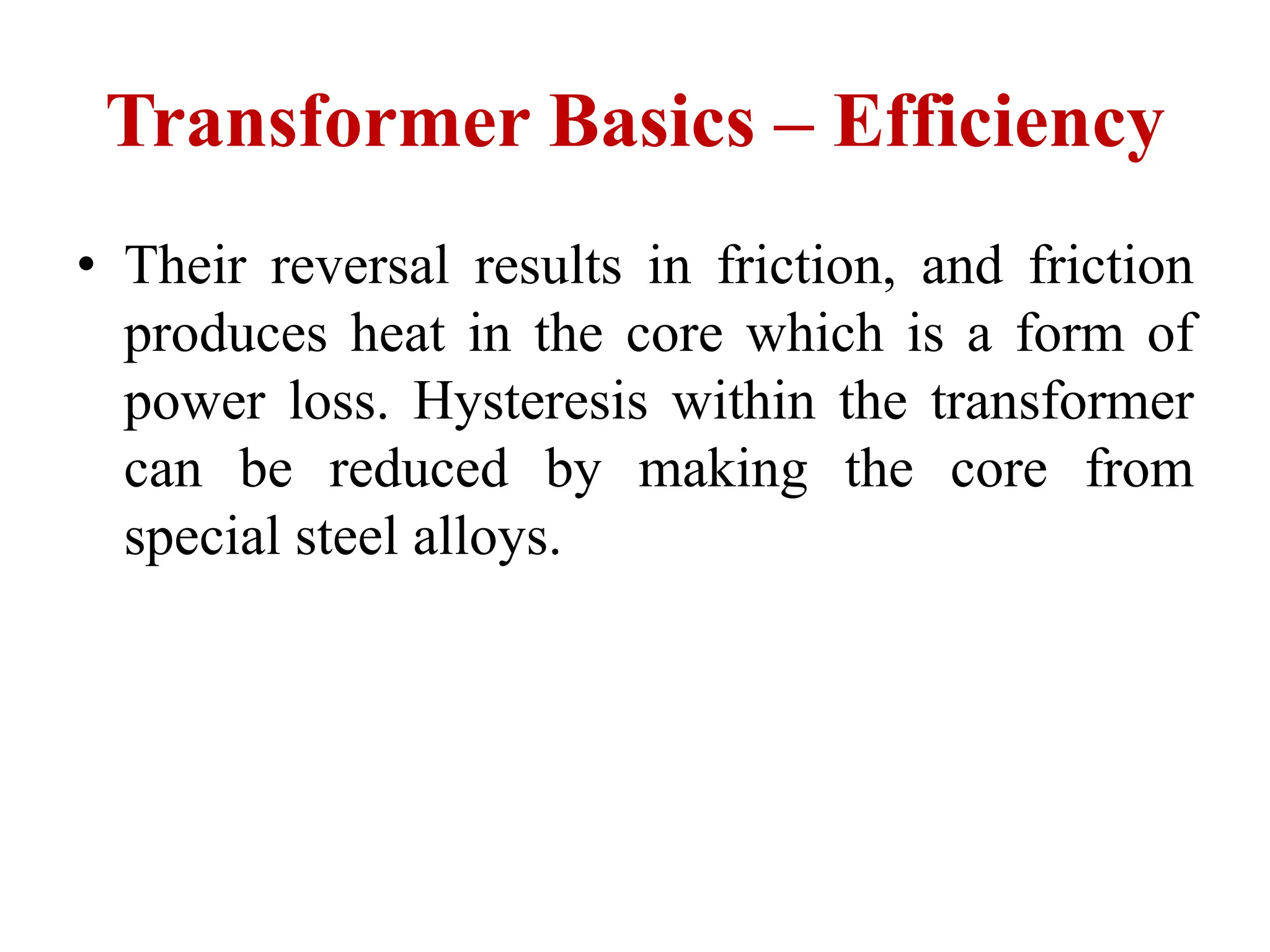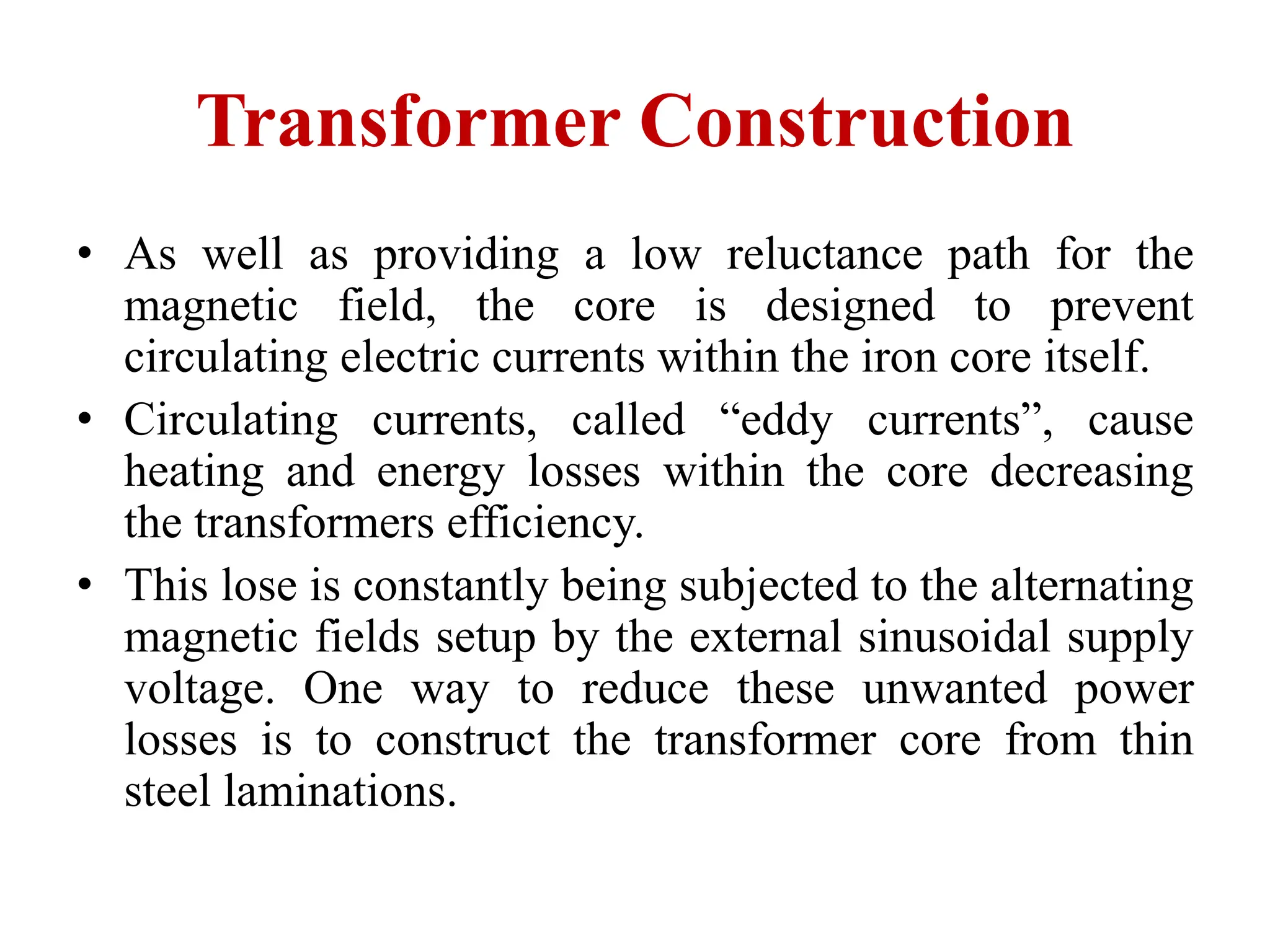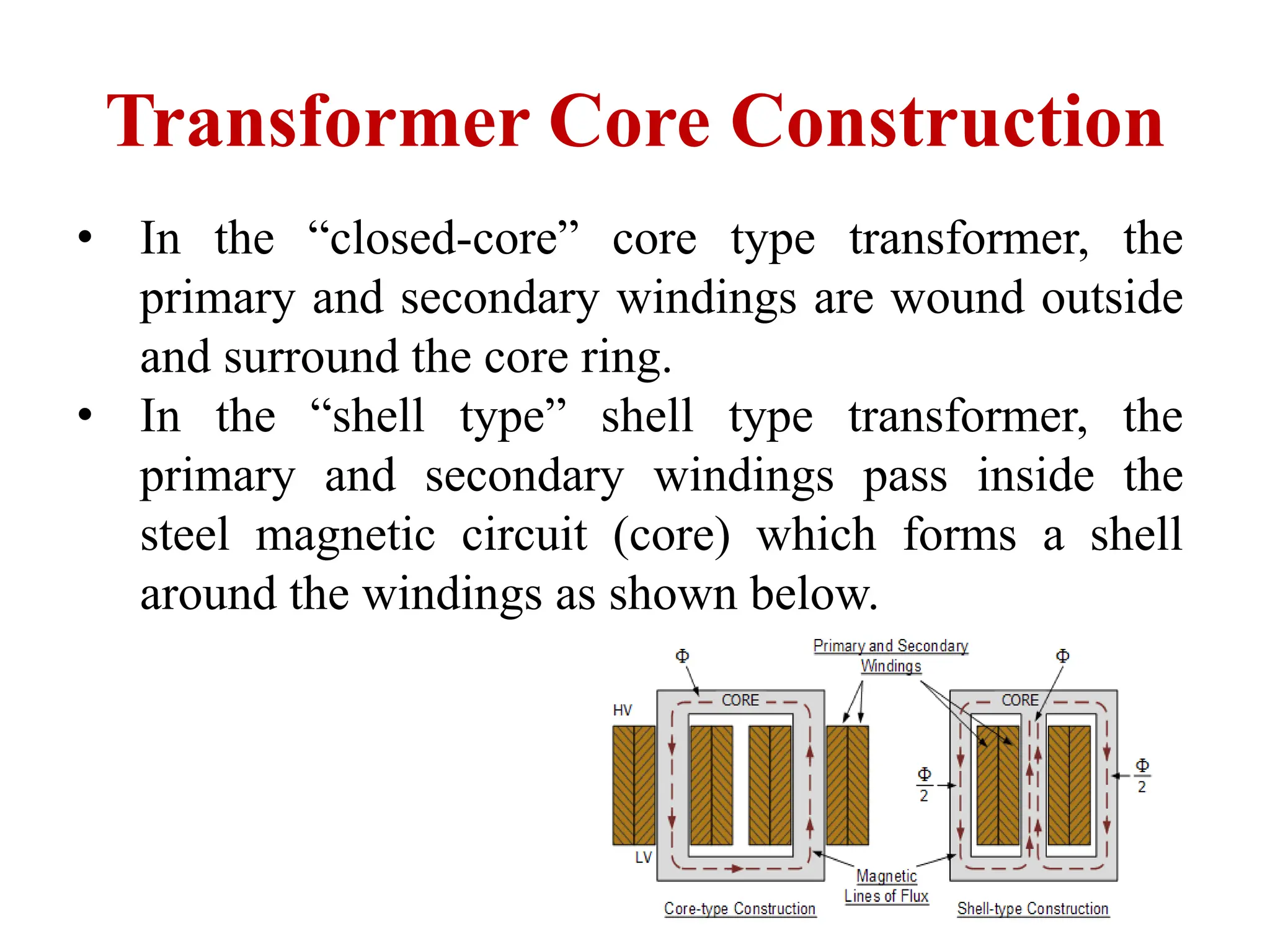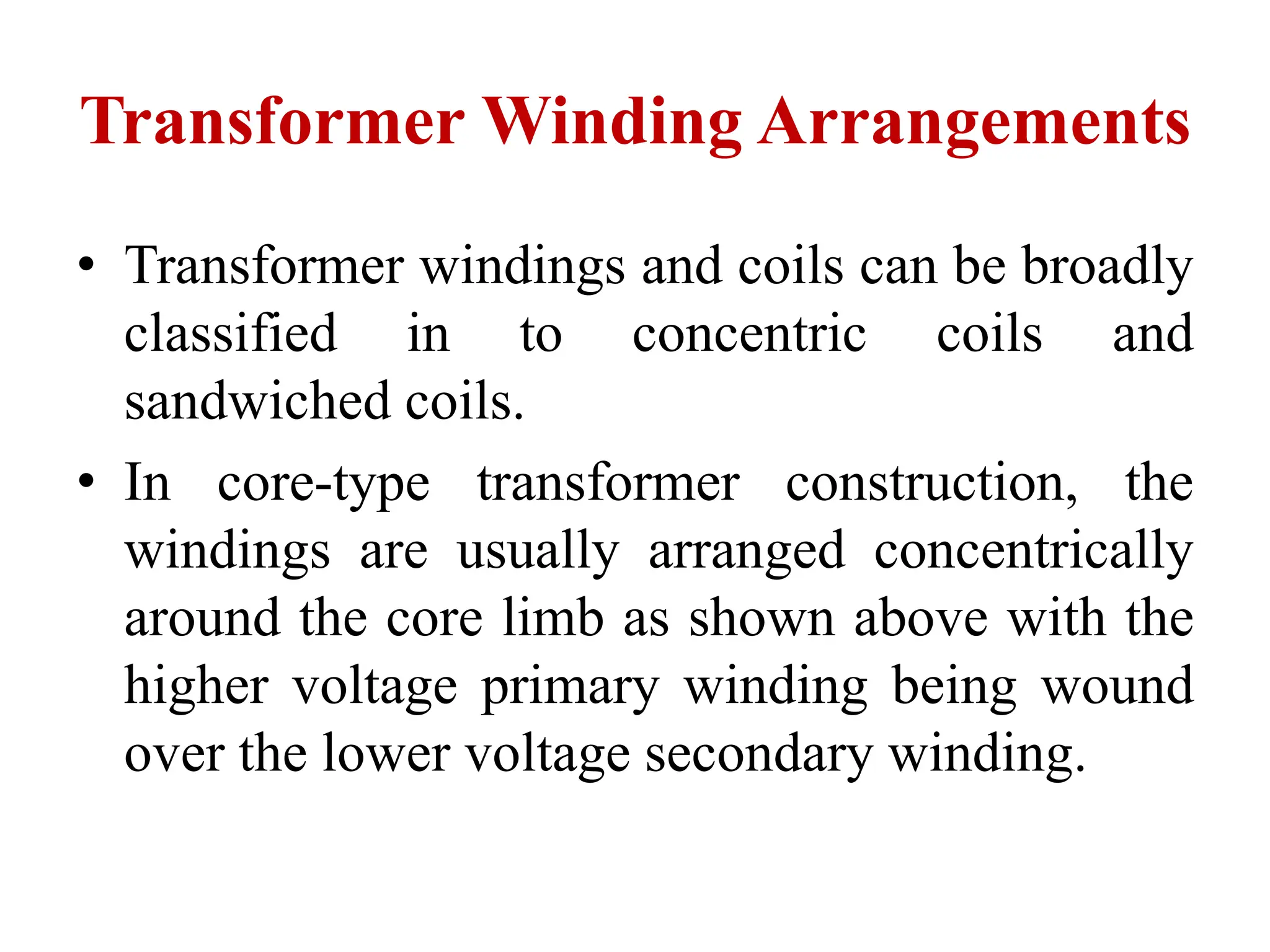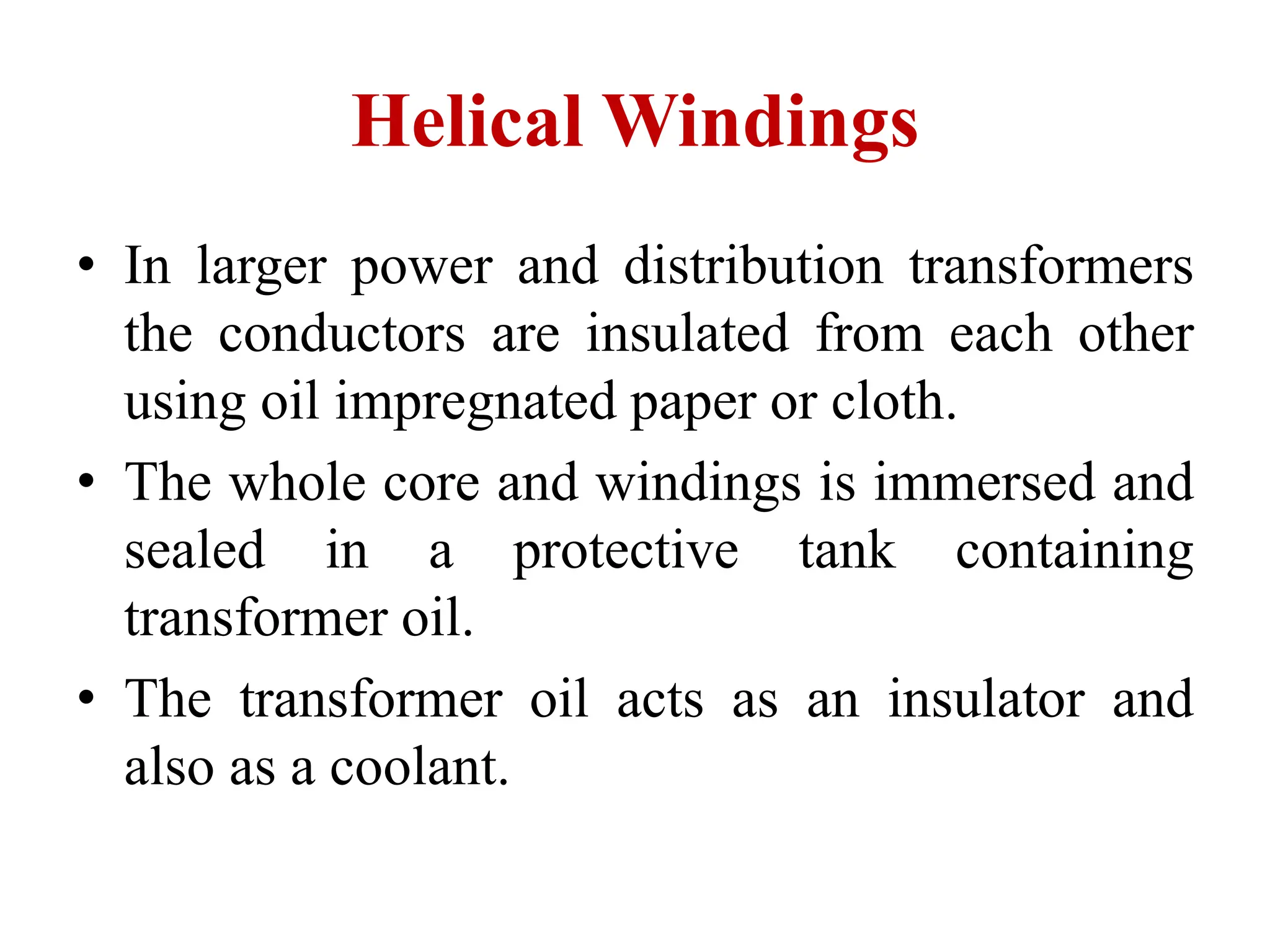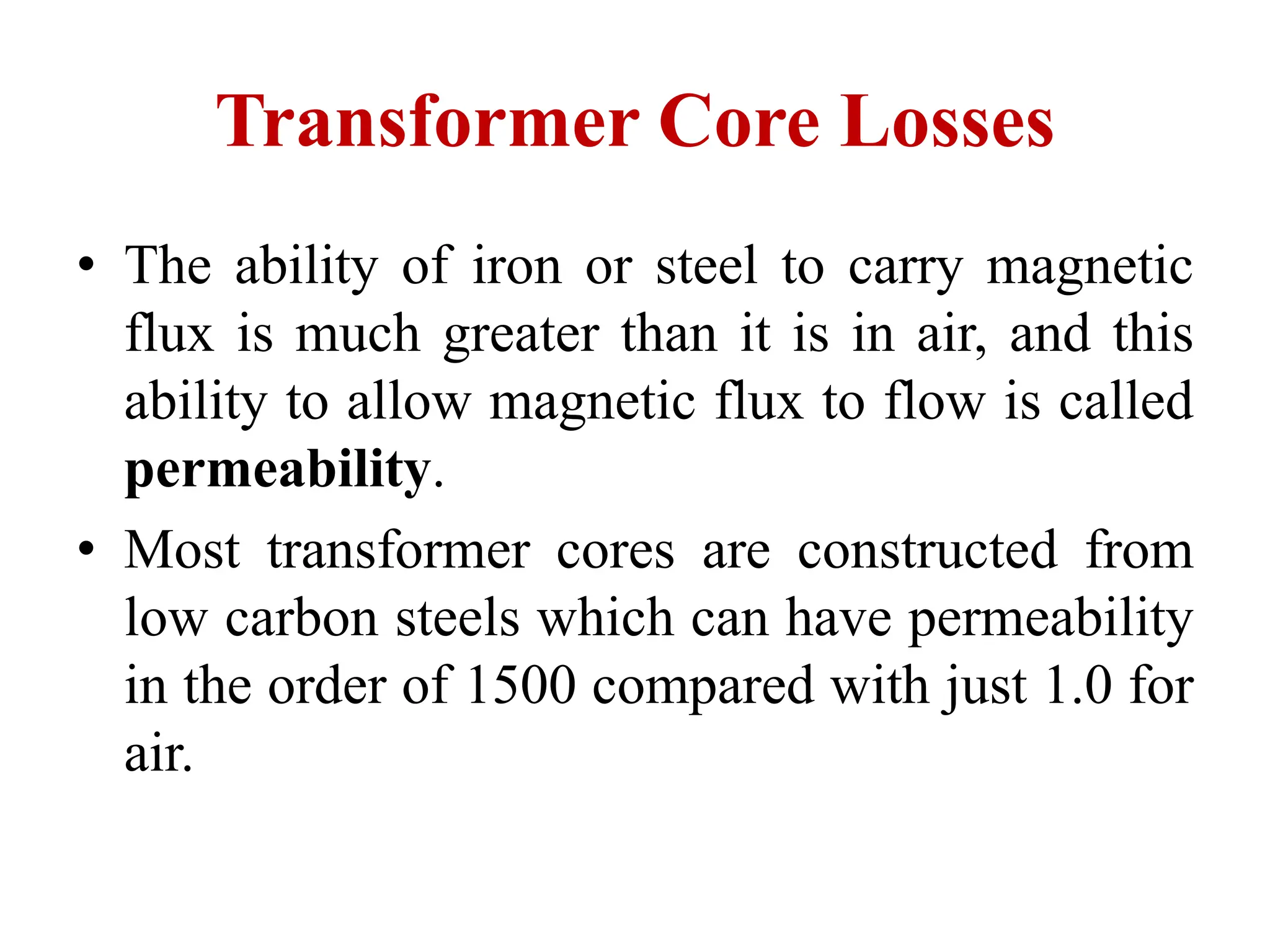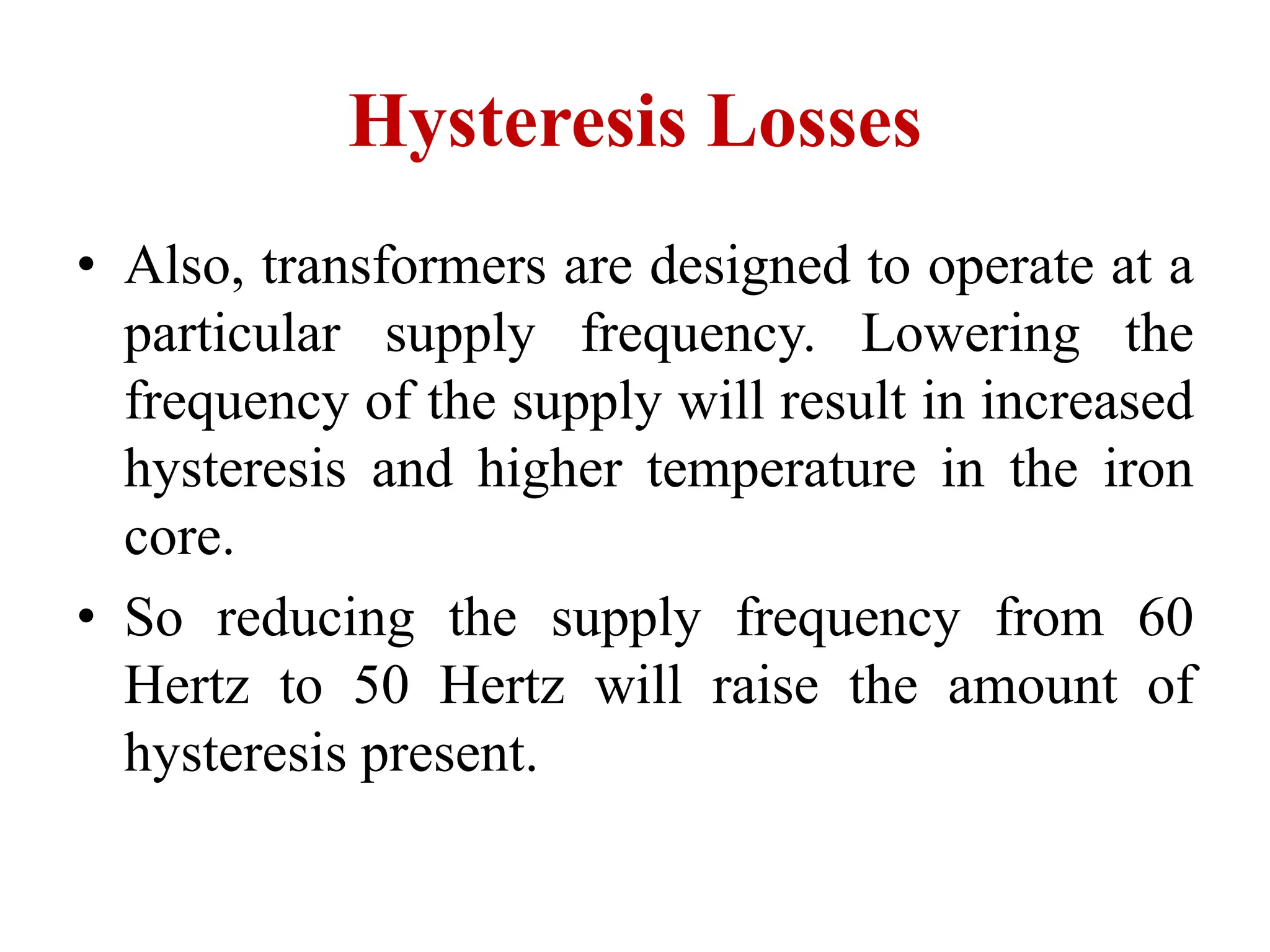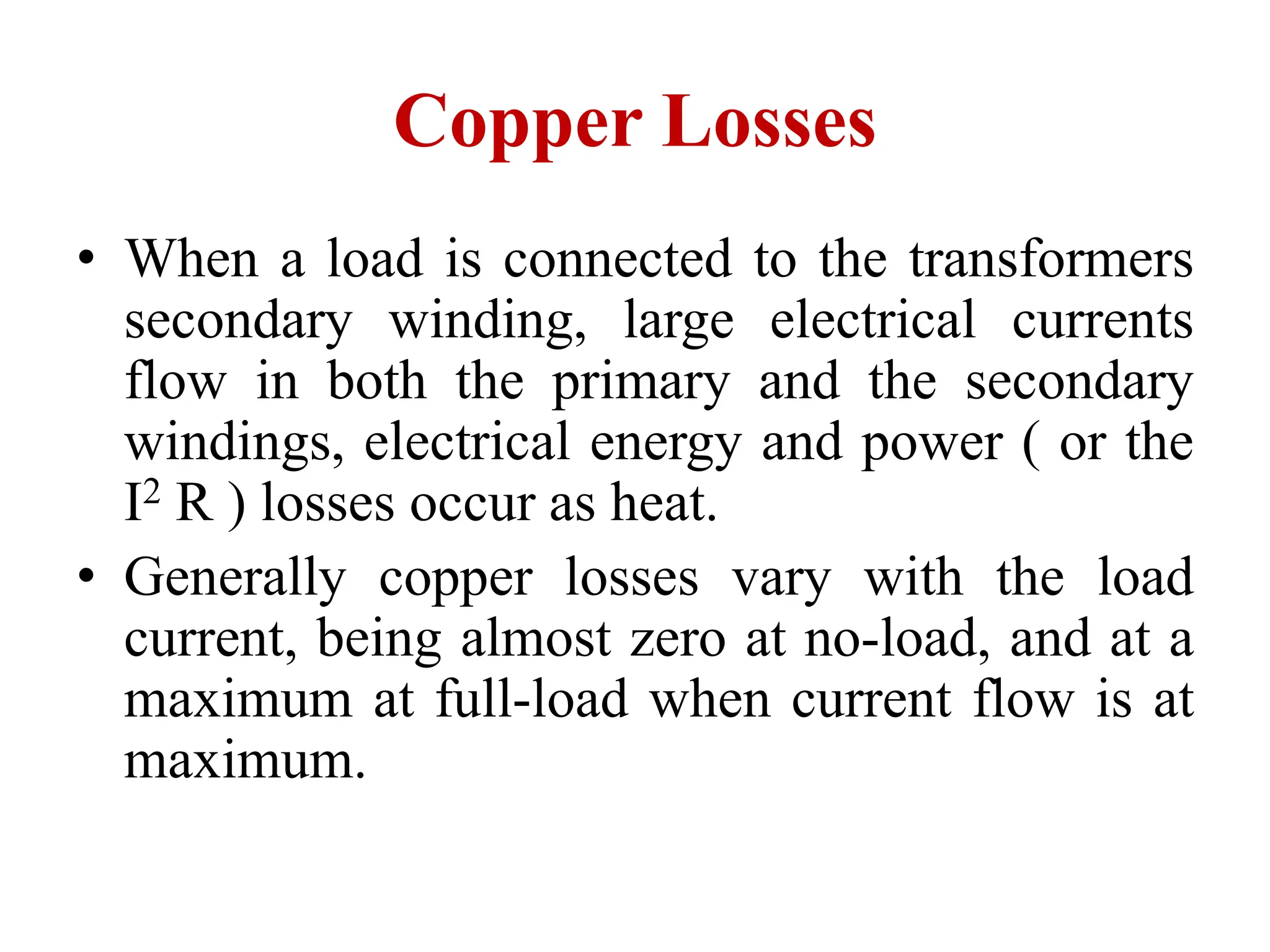This document discusses the basics of how transformers work. It explains that a changing magnetic field in the primary winding induces a voltage in the secondary winding according to Faraday's law of induction. The number of turns in each winding determines the voltage, with a higher turn ratio producing a higher output voltage. Transformers allow alternating currents to be stepped up or down while maintaining power levels, but cannot operate on direct current. Losses reduce efficiency from the ideal of 100% to typical values of 94-98% for large transformers.




